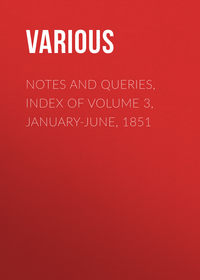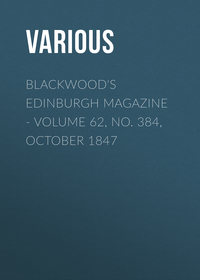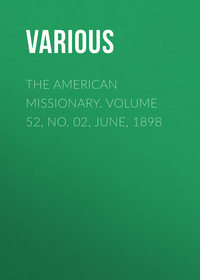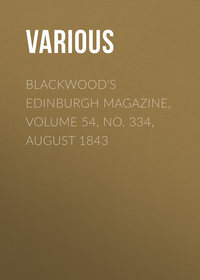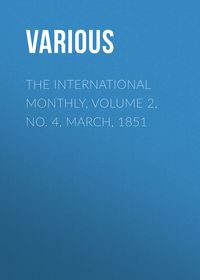 полная версия
полная версияThe Mirror of Literature, Amusement, and Instruction. Volume 10, No. 285, December 1, 1827

Various
The Mirror of Literature, Amusement, and Instruction / Volume 10, No. 285, December 1, 1827
CASTLE OF THE SEVEN TOWERS AT CONSTANTINOPLE
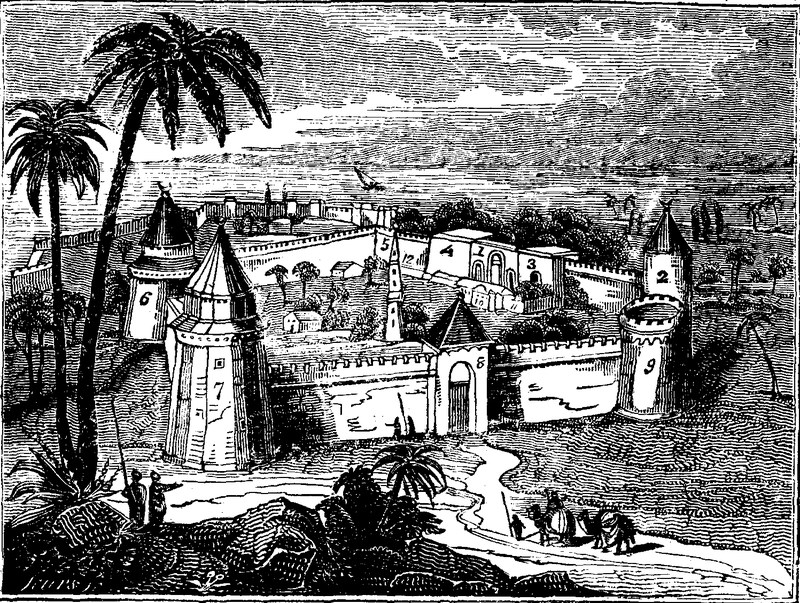
1. Triumphal Arch of Constantine.
2. First Tower of the Pentagon.
3. First Marble Tower.
4. Second Marble Tower.
5. Angle of the Pentagon with the fallen Tower.
6. Double Tower.
7. Dedecagonal tower.
8. Square Tower of entrance to the Prison.
9. Round Tower falling to decay.
10. House of the Aga, &c.
11. Garden of the Aga's House.
12. Cemetery of the Martyrs.
The celebrity of the Seven Towers in European countries, though strongly savouring of romance, is no joke—it being the prison where the Turks confine the ministers and ambassadors of the powers with whom they are at war. At the present moment this engraving will doubtless be acceptable to our readers; especially to such of our City friends as have recently been induced to speculate on the heads of ambassadors of the allied powers; and a few days since it might have served as a scale for their wagering the "price of blood."
With the early account of this castle we shall be brief. It is cited in the history of the lower empire from the sixth century of the Christian era, as a point which served for the defence of Constantinople. The embrasures of some of its towers, as well as of the towers that flank the ramparts of the town from the southern angle of the castle to the sea, blackened as is supposed by the Greek fire, announce that it was the principal bulwark of the city on the side of the Propontis, in the latter times of the empire. In 1453, Mahomet II., after an obstinate siege, gained possession of Constantinople and the Castle of the Seven Towers, fear opening to him one of the gates of the latter. The Turks relate that 12,000 men perished in this siege; and the marks of the ravages of the artillery are still visible, for, as usual, the conqueror did not concern himself about repairs. Since that time the place has been the arena of many remarkable events, among which was the tragical murder of the caliph Osman the Second. This has been followed up by many bloody executions; and at every turn gloomy sentiments, and the proud names of Turks and Greek princes, inscribed on the walls, speak the sad fate of those by whose hands they were traced. Towers filled with irons, chains, ancient arms, tombs, ruins, dungeons, cold and silent vaults, a pit called the well of blood, the funeral cry of owls and of vultures, mingled with the roar of the waves—such are the objects and sounds with which the eye and ear are familiarized in these dreary abodes, according to poor Ponqueville, the traveller, who speaks from experience—within the walls. All this is a sorry picture for the
"—Gentlemen of England,Who live at home at ease."But the state purposes to which the Seven Towers are appropriated boast of comparative comfort, "the prisoners detained here being distinguished from all other prisoners of war by an allowance for the table which is assigned them by the sultan, and by the appellation of mouzafirs, or hostages.1 It may, indeed," continues our traveller, "be considered as a great favour to be regarded in this light, comparing their situation with that of others, who fall into captivity among the Turks." Moreover, this castle is dignified as an imperial fortress, and governed by an aga with a guard and a band of music. Indeed, we suppose it a sort of lock-up house preparatory to more rigorous confinement; and its governorship is a peaceable and honourable post. The Turks who compose the garrison of the Seven Towers have, in the first place, the advantage of being esteemed persons of a certain distinction in their quarter; and, secondly, they are exempted from going out to war, to which every Musselman is liable.
This castle stands at the eastern extremity of the Propontis, or Sea of Marmara; it is a tolerably regular pentagon, four out of the five angles of which are flanked by towers; the fifth angle had also a tower, but it exists no longer. Its principal front is towards the west, and has, besides the tower at one of the angles, two others, which stand on each side the ancient triumphal arch of Constantine. The gate of entrance to the Seven Towers on the side of the town is to the east, in a small square. The longest side of the pentagon is that in which Constantine's arch is included; while towers existed at all the angles, this side presented a front of four towers; but it has now only three. The first marble tower is an enormous mass, between eighty and ninety feet high.
The triumphal arch of Constantine, which occupies the centre between the two marble towers, conducts to the golden gate in the exterior enclosure of the castle. The arch was more than ninety feet in height; but it has been so much injured by artillery, that no idea can now be formed of its ornaments. In the second marble tower is the Cave of Blood: the first door by which it is entered is of wood; this opens into a corridor of twelve feet long by four feet wide, having at the end two iron steps ascending to an iron door, and this leads into a semicircular gallery; at its furthest extremity is a second iron door, which completes the gallery, and ten feet further an immense massive door enclosing the dungeon. In the midst of this sarcophagus is a well, the mouth of which is level with the ground, and half closed by two flag-stones; to this is given the name of the well of blood, because the heads of those who are executed in the dungeon are thrown into it. In the same tower with this dungeon is a staircase leading up to a number of cells; from some of them, which are higher than the ramparts, the eye may be gratified with a view over Constantinople through loop-holes pierced in the walls. Here the Turks formerly used to confine those whom they call mouzafirs, or hostages; but the latter have now the choice allowed them of hiring more eligible apartments.
The first enclosure of the Seven Towers is inhabited chiefly by poor Turks, who have houses, and live there with their families. They also belong to the guard of the castle.
The air of the Seven Towers is in general unwholesome, and very likely to produce scrofula. In the summer the walls, heated by the sun, transform the place into a furnace; and the apartments on the first floor are at all times extremely damp.
Our engraving, aided by the subjoined references, will, however, enable our readers to form an accurate idea of the topography of the Seven Towers. It is copied from the Travels of M. Ponqueville, who devotes a chapter of his quarto volume to a minute description of towers, gardens, and fortresses. Nothing can exceed the horror with which his catalogue of their miseries is calculated to impress the reader; indeed, they fall but little short of some of the highly-wrought fictions of barbarous romance.
ASTRONOMICAL OCCURRENCES FOR DECEMBER, 1827
(For the Mirror.)The sun enters the cardinal and tropical sign Capricorn on the 22nd, attaining his greatest austral declination at 1h. 31m. afternoon.
The moon is in opposition on the 3rd; in apogee on the 6th, and in conjunction and perigee on the 18th.
Mercury is in perihelion on the 1st, becomes stationary on the 9th, and reaches his greatest elongation on the 19th, when he may be seen before sunrise, as well as a few preceding and succeeding mornings; be rises on the abovementioned day at 6h. 8m.
Venus is in aphelio on the 18th, and in conjunction with the planet Herschel on the 28th at 9 h. evening; she sets on the 1st at 4 h. 48 m., and on the 31st at 5-1/2 h. evening.
Mars rises on the 1st at 3h, 14m., and on the 31st at 2 h. 46 m. morning.
Jupiter rises on the 1st at 4 h. 39 m. and on the 31st at 3h. morning; he has now receded far enough from the sun to render the eclipses of his nearest moon visible; the first immersion will take place on the 3rd at 6 h. 39 m. 4 s. morning; the next on the 19th at 4 h. 54 m. 42 s. morning, and the last on the 26th at 6 h. 48 m. 14 s. morning, those being the only ones that happen during the month.
Saturn who commenced retrograding on the 2nd, last month, in 20 deg. 18m. of Cancer, will on the 31st have reached 17 deg. 26 m. of the same sign, and will be found a few degrees below the star Pollux in the constellation Gemini, rising on the 1st at 6h. 49m., and on the 31st at 4 h. 27 m. evening.
Herschel culminates on the 1st at 3 h. 23m., and on the 31st at 1 h. 17 m.
Fomalhaut in Pisces, a star of the first magnitude, and very much resembling the planet Saturn, (except that its light is not so steady,) will be observed only a few degrees above the horizon in the south west, coming to the meridian at 6 h. 19 m. evening; Markal in the wing of Pegasus, the flying horse at 6 h. 26 m. Alpheratz and Mirach, the former in the head, and the latter in the girdle, of Andromeda at 7 h. 31 m. and 8 h. 31 m. Menkar in the jaw of Cetus the whale at 10 h. 24 m.; the four preceding are of the second magnitude. The Pleiades south at 11 h. 8m., and Aldebaran in Taurus, generally called the Bull's Eye, a brilliant star of the first magnitude at 11 h. 56 m.; the upper or northern portion of the constellation Orion at 12-1/2 h., and the lower or southern part at 1 h. morning.
These remarks cannot be better concluded, than by calling the attention of the readers of the MIRROR to the unerring regularity of the motion of the heavenly bodies. Though their magnitude is so immense, the certainty and correctness of their movements during thousands of years, is far more exact than that of the best chronometer ever made, even during a single year: how great, then, must be the ignorance of him who does not behold in them the Almighty ruler of all things; and how great the folly of him, who says in his heart, and evinces by his conduct that he believes there is no God. And let him who denies what he cannot comprehend, be addressed in the impressive language of holy writ, "Canst thou bind the sweet influences of the Pleiades, or loose the bands of Orion? Canst thou bring forth Mazzaroth in his season? or canst thou guide Arcturus with his Sons?" 14th November, 1827. PASCHE.
COLD WINTER IS COMING
(For the Mirror.)Cold Winter is coming—take care of your toes—Gay Zephyr has folded his fan;His lances are couch'd in the ice-wind that blows,So mail up as warm as you can.Cold Winter is coming—he's ready to startFrom his home on the mountains afar;He is shrunken and pale—he looks froze to the heart,And snow-wreaths embellish his car.Cold Winter is coming—Hark! did ye not hearThe blast which his herald has blown?The children of Nature all trembled in fear,For to them is his power made known.Cold Winter is coming—there breathes not a flower,Though sometimes the day may pass fair!The soft lute is removed from the lady's lorn bower,Lest it coldly be touched by the air.Cold Winter is coming—all stript are the groves,The passage-bird hastens away;To the lovely blue South, like the tourist, he roves,And returns like the sunshine in May.Cold Winter is coming—he'll breathe on the stream—And the bane of his petrific breathWill seal up the waters; till, in the moon-beam.They lie stirless, as slumber or death!Cold Winter is coming, and soon shall we seeOn the panes, by that genius Jack Frost,Fine drawings of mountain, stream, tower, an tree—Framed and glazed too, without any cost.Cold Winter is coming–ye delicate fair,Take care when your hyson you sip;—Drink it quick, and don't talk, lest he come unaware,And turn it to ice on your lip.Cold Winter is coming—I charge you again—Muffle warm—of the tyrant beware—He's so brave, that to strike the young hero he's fain—He's so told he'll not favour the fair.Cold Winter is coming—I've said so before—It seems I've not much else to say;Yes, Winter is coming, and God help the poor!I wish it was going away,Nov 5th 1827. C. COLE.
NAUTICAL PHRASES
(To the Editor of the Mirror.)Sir,—The annexed Definition of Nautical, Names, &c. will not, I dare say, to most of your readers, be uninteresting. G.W.N.
The Starboard is the right side of the ship, as the lar-board is the left.
The Parrel is a movable band-rope, used to fasten the yard to its respective mast.
Backstays are long ropes, reaching from the right and left sides of the vessel to the mast heads.
Travellers are slight iron rings, encircling the backstays, and are used for hoisting the top-gallant yards, and confining them to the backstays.
Rolling-tackle is a number of pulleys, engaged to confine the yard to the weather side of the mast; this tackle is much used in a rough sea.
Booms are masts or yards, lying on board in reserve.
The Courses are the mainsail, foresail, and the mizen.
The Staysail is of a triangular form, running upon the fore-topmast-stay, just above the bowsprit.
Reef-tackles are ropes employed in the operation of reefing. &c.
Clue-lines are used to truss up the clues, or to lower the corners of the largest sails.
The Brake is the handle of the pump, by which it is worked.
Bowlines are ropes for keeping the windward edge of the sail steady.
The Wells are places in the ship's hold for the pumps, &c.
Earings are small lines, by which the uppermost corners of the largest sails are secured to the yard-arms.
Reefs are spaces by which the principal sails are reduced when the wind is too high, and enlarged again when its force abates.
Topsails are long and square, of the second degree in magnitude in all great ships.
Haliards are single ropes, by which the sails are hoisted up and lowered at pleasure.
Tally is the operation of hauling aft the sheets, or drawing them in the direction of the ship's stern.
Towing is the operation of drawing a vessel forward by means of long lines, &c.
Timoneer, from the French timonnier, is a name given, on particular occasions, to the steersman of a ship.
Bars are large masses of sand or earth, formed by the surge of the sea; they are mostly found at the entrances of great rivers or havens, and often render navigation extremely dangerous.
The Ox-Eye, so called by seamen, is a remarkable appearance in the heavens, resembling a small lurid speck, and always precedes two particular storms, known only between the tropics.
Azimuth-Compass is an instrument employed for ascertaining the sun's magnetical azimuth.
Studding-Sails are long and narrow, and are used only in fine weather, on the outside of the large square sails.
Stay-Sails have three corners, and are hoisted up on the stays when the wind crosses the ship.
Broaching-to is a sudden movement in navigation, when the ship, while scudding before the wind, accidentally turns her side to windward.
Wales are a number of strong and thick planks, covering the lower part of the ship's side.
Scud is a name given by sailors to the lowest clouds; which are mostly observed in squally weather.
The Sheets are ropes used for extending the clues, or lowering the corners of the sails.
Brails are ropes used to truss up a sail to a mast or yard.
Reef-Bands are long pieces of rough canvass sewed across the sails to give them additional strength.
Scudding is a term applied to a vessel when carried furiously along by a tempest.
Leeward implies when the ship lies on that side to which the wind is directed.
Windbound means when the ship is detained in one particular station by contrary winds.
Windward is when the ship is in the direction of the wind.
CHRONICLES OF THE CANONGATE
(To the Editor of the Mirror.)Sir,—Since my last communication to you on the subject of the works, so commonly spoken of as by the "Great Unknown"—"the Wizard of the North," and other equally novel cognomina, the veil has been withdrawn; we now have the open avowal, both from his own lips, and under his own hand, of the authorship from the individual himself, who has so long, and, as it now appears, so justly, enjoyed the reputation of having written them.
To judge from what he says in the second volume of "the Chronicles of the Canongate," just published—I mean in the character of Mr. Croftangry,—it is clear that he is conscious of such slips and carelessness as I have before pointed out. I am therefore at a loss to understand why he should allow them to remain like spots that deface the general beauty of his productions, as by submitting them for perusal to the merest Tyro in grammar or composition before they were sent to press, they could not fail of being obliterated.
It is surely no very good policy for an artist, jealous of his reputation, knowingly to leave his works unfinished. Without, however, detaining you, or your readers, by such obvious remarks, I shall resume my task, hoping that you will be able to find room for the following in your useful and entertaining miscellany.
In the first volume, p. 168, of the present work, we read: "She was once the beautiful and happy wife of Hamish Mac Tavish, for whom his strength and feats of prowess gained him the title of Mac Tavish Mhor." This kind of style would scarcely be allowed to pass in Leadenhall-street. What is meant by for whom, with his immediately following, and then him a little after? Does not the author intend to say, that the strength, &c. of Mac Tavish gained him the title of Mac Tavish Mhor? If so, (and there can be no doubt of it from the context,) then he should have written the sentence thus: "whose strength and feats of prowess had gained him the title of Mac Tavish Mhor."
"He gained the road, mounted his pony, and rode upon his way," p. 183 of the same volume, is, in the latter part of it, another curious phrase. "He mounted his pony," says the author. May we not suppose he rode upon it too? But he adds "rode upon his way."
Again: "His reputed grandfather with his pockets stuffed out with Bank notes, would come to atone for his past cruelty, by heaping his neglected grandchild with unexpected wealth," vol. 2., p. 87. We heap up wealth, but not persons with it, for that would hardly be kind. To load one with wealth is a common expression.
"Is it possible that the bold adventurer can fix his thoughts on you, and still be dejected at the thoughts that a bonny blue-eyed lass looked favourably on a less-lucky fellow than himself?" vol. 2, p. 136. Such is the question put by Middlemas to his friend Hartley, when speaking together on the subject of the interesting Menic Grey, and his projected Indian trip. But how could he ask if the bold adventurer fixed his thoughts on him, when it was the person addressed who entertained the idea of becoming one? and how, if the bold adventurer was dejected? when he had already distinguished him, taking the words in their proper application, as another individual in a general sense. It is altogether a singular specimen of abstruse phraseology. Then "fix his thoughts" "dejected at the thoughts." Fie upon it!
"Hartley fell a victim to his professional courage, in withstanding the progress of a contagious distemper, which he at length caught, and under which he sank," vol. 2, p. 367. If he withstood the progress of the disease, how could he fall a victim to it? The author should have said, "in his endeavours to withstand" or "arrest the progress of it."
"So stood the feelings of the young man, when, one day after dinner, the doctor snuffing the candle, and taking from his pouch the great leathern pocketbook in which he deposited particular papers, with a small supply of the most necessary and active medicines, he took from it Mr. Monçada's letters, and requested Richard Middlemas's serious attention," vol. 2, p. 88 and 89. Who is he? the doctor? Is he not mentioned before? And there he is left to stand without his natural support, for he has taken it from him. Does not the writer of this sentence recollect "My banks they are furnished with bees." I could add another take from to the page by way of note.
The following I leave without comment.
"Judgement," vol. 1, p. 2; vol. 6, p. 6. and judgment, vol. 1, p. 85, a heraldic shield, vol. 1, p. 68; desireable, vol. 2, p. 39.
As much iron as would have builded a brig, vol. 1, page 68. A good tune is grinded, vol. 1, p. 143. Butler and Mercer had both spoke to their disparagement, vol. 2, p. 289.
Worthy Mr. Piper, best of contractors who ever furnished four frampal jades, vol. 1, p. 45.
With the next morning I will still see the double summit of the ancient Dan, vol. 1, p. 229.
And then I will find it easier to have you prosecuted, vol. 2, p. 169.
We will be happy, if it is in our power, to repay a part of our obligations, vol. 2, p. 222.
Thou art the fiend who hast occasioned my wretchedness in this world, and who will share my eternal misery in the next, vol. 2, p. 229.
He found himself under the alternative of being with him on decent and distant terms, or of breaking off with him altogether. The first of these courses might perhaps have been the wisest, but the other was the most congenial to the blunt and plain character of Hartley, vol. 2, p. 256.
He inquired at their superior for Barak el Hadgi, vol. 2, p. 263.
And inquiring at those whom he considered the best newsmongers, vol. 2, p. 276.
He faltered out inquiries at his niece, vol. 1, p. 20.
Your father asked none save at his courage and his sword, vol. 1, p. 260.
The concluding (of) a literary undertaking, vol. 2, p. 1.
I would as soon dress a corpse, when the great fiend himself—God sain us—stood visibly before us, than when Elspat of the Free is amongst us, vol. 1, p. 250. November 7, 1827. Oculus.2
LETTER
Written in the Condemned Cells, Newgate, by Captain Lee, the night previous to his execution, being convicted of forging a bill of exchange for 15l. on the Ordnance Office.
Newgate, March 3, 1784.
My Dear Sir,—Before this reaches you, the head that dictates and the hand that traces these lines shall be no more. Earthly cares shall all be swallowed up, and the death of an unthinking man shall have atoned for the trespass he has committed against the laws of his country. But ere the curtain be for ever dropped, or remembrance leave this tortured breast, let me take this last and solemn leave of one with whom I have passed so many social and instructive hours, whose conversation I fondly cultivated, and whose friendship for me I hope will remain, even after the clay-cold hand of death has closed my eyes in everlasting darkness.
I cannot think you will view this letter with stoic coolness, or with listless indifference. Absorbed as the generality of men are in the pursuits of pleasure or the avocations of business, there are times when the mind looks inward upon itself, when a review of past follies induces us to future amendment, and when a consciousness of having acted wrong leads us to resolutions of doing right. In one of those fortunate moments may you receive these last admonitions! Shun but the rock on which I have struck, and you will be sure to avoid the shipwreck I have suffered. Initiated in the army at an early period of life, I soon anticipated not only the follies, but even the vices of my companions. Before, however, I could share with undisturbed repose in the wickedness of others, it was necessary to remove from myself what the infidel terms the prejudices of a Christian education. In this I unfortunately succeeded; and conceiving from my tenderest years a taste for reading, my sentiments were confirmed, not by the flimsy effusions of empty libertines, but by the specious sophistry of modern philosophers. It must be owned that at first I was rather pleased with the elegance of their language than the force of their reasoning; as, however, we are apt to believe what we eagerly wish to be true, in a short time I soon became a professed deist. My favourite author was the late celebrated David Hume. I constantly urged his exemplary behaviour in private as a strong argument in favour of his doctrines, forgetting that his literary life was uniformly employed in diffusing his pernicious tenets, and his utmost endeavours were constantly exerted in extending the baneful influence of his philosophical principles. Happy for me had I always been actuated by the considerations which fill my bosom at this moment, and which I hope will animate me in that awful part to-morrow's sun shall see me perform. But the die is cast, and I leave to the world this mournful memento, "that however much a man may be favoured by personal qualifications, or distinguished by mental endowments, genius will be useless, and abilities avail but little, unless accompanied by a sense of religion, and attended by the practice of virtue; destitute of these, he will only be mounted on the wings of folly, that he may fall with greater force into the dark abyss of endless despair."



